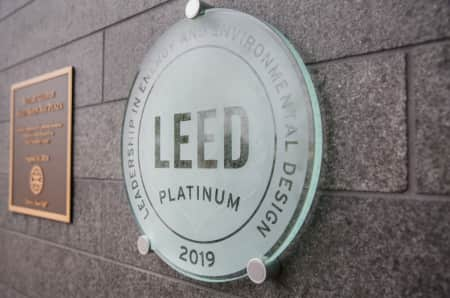4 Inspiring LEED Certified Buildings
The LEED Certification process has grown to be the top standards for green and sustainable buildings around the world. With over 96,000 LEED projects all over the world, these are some of the most surprising LEED Certified buildings out there.
1. Toyota Elephant Passage, Denver, CO
The elephant passive in the Denver Zoo achieved LEED Platinum level certification in 2012. It was the first large animal exhibit in the US to achieve this level of sustainable recognition. The award represents the zoo’s commitment to being as environmentally responsible as possible.
The Toyota Elephant Passage in a 10-acre complex with more than 10 major buildings. The complex used a combination of renewable energy, recycled water programs, natural daylight and ventilation as well as green construction and design practises to achieve the level needed for the Platinum certification.
One of the more innovative additions to the Denver Zoo during this construction process was the Biomass Gasification System One. The system was built to convert human trash and animal waste into energy for the zoo. Every year, the system eliminates more than 1.5 million lbs of trash from landfills. More than 90% of the zoo’s entire waste will be used in this system every year.
The Denver Zoo had been previously recognized as one of the greenest zoos in the United States. This achievement in 2012 only added to the high standard
2. ITC Maurya Hotel, New Delhi, India
ITC Hotels have talked the talk of “Responsible Luxury” where luxury and unique experience do not have to forsake eco-friendly practises or standards. The ITC Maurya Hotel in New Delhi set itself apart as a prime example that luxury can meet sustainability.
Certified In December 2010, the Platinum level granted to the hotel was achieved through vast and sustainable renovations to the existing hotel building. Scoring 92 out of the 100 possible points within the LEED Certification scoring system, this hotel was the first hotel in the world to be certified at a Platinum rating under the LEED Existing Building program.
The design of the building is shaped to face the sun during the morning and evening, maximizing natural light within the building. The open-air lobby is cooled with natural air and wind while the actual materials within the building were chosen with sustainability in mind. From wood and stone accents to natural silk materials can be seen from the lobby to the bed sheets.
Rainwater irrigation, native plant species, a private wind farm and zero single-use plastic help to create a luxury experience that even Mother Earth can enjoy.
3. The Glumac Shanghai Office TI, Shanghai, China
The Glumac Shanghai Office TI was the first Platinum building certified under LEED V4 in all of East Asia. The office has 6,450 square feet V4 is the more inclusive and transparent LEED system to date which focuses on both construction and operation. The LEED V4 framework puts extra emphasis on occupant and human health and wellbeing.
The office building was built from a 100-year-old mansion and faced many challenges. The location in the heart of Shanghai meant the design team struggled with the fractured landscape, unregulated building materials, poor city air quality and even communication challenges between the building team, the LEED Certification committee and the owner and neighbourhood around the project.
The finished office building features an exceptional air filtration system, a 63% reduction in water use, a rainwater gathering and filtration system, zero hazardous chemicals within the office space, a radiant floor system for heating and cooling, a zero carbon footprint and locally sourced, recycled or salvaged materials for all upgrades and added construction.
The Platinum award was given in May of 2015.
4. Ghana Ridge Hospital, Accra, Ghana
The Ghana Ridge Hospital in Accra, Ghana – now called the Greater Accra Regional Hospital – was the first LEED Certified hospital in all of Africa. The hospital was finished in May of 2016 and received Silver certification in December of that same year. The hospital had a budget of $1 million for construction and employed Miami architect Perkens & Will to help them build a new hospital unlike any other.
What is unique about this project is that they balanced new environmental standards with the practical demands for a hospital in the region. Building a modern building in Ghana is very different from building one in New York City. One example is elevators. Elevators take up a lot of energy and simply were not possible at the hospital. Instead, the Miami architect firm designed a short and stout building with a walkable ramp to connect all four stories.
Natural ventilation, open-air breezeways, outdoor rooms and a solar hot water heater and solar electric power system not only helped to achieve the LEED Silver ranking but also kept overhead costs low for the hospital.
The Ghana Ridge Hospital represents perfectly the concept that one size doesn’t fit all in terms of building design and innovation. Sustainability and environmentalism can look different all across the world. What is made even more clear, however, is that meeting high standards of environmentalism and building sustainability is possible anywhere.
These four buildings are just a tiny sample of the vast number of innovative sustainable buildings around the world. Whether it’s a hospital in Ghana or a massive office building in China, the LEED Certification standard acts as a symbol of global connection and dedication to the environment.

